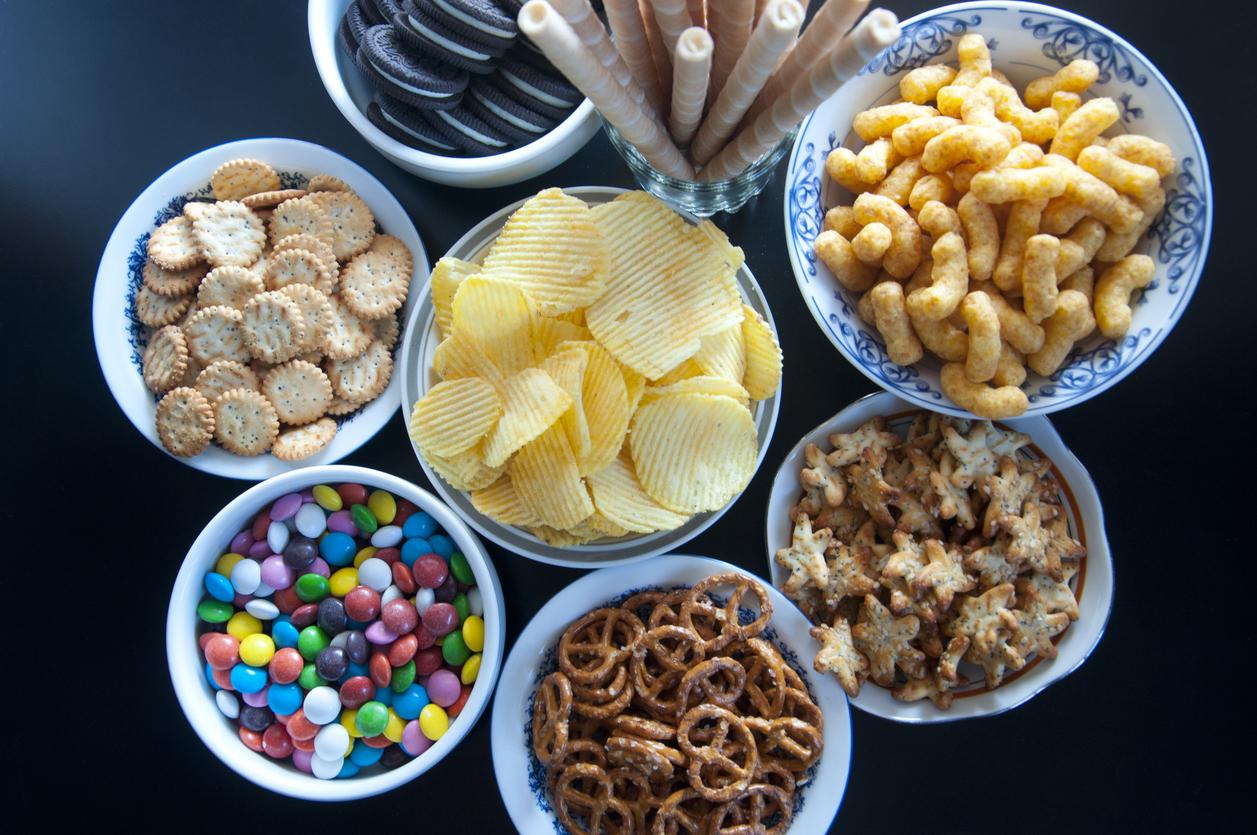An American neuroscientist invites us to rethink our nutrition by limiting the consumption of ultra-processed foods, regularly associated with pathologies.

- In France, 69% of food products offered in supermarkets are ultra-processed, according to a 2021 study, and a third of the French’s plate is made up of ultra-processed foods, according to another.
- To identify whether a product is processed, it is best to decode the list of ingredients on food labels, looking for “the addition of salt, fats and sugars, the absence of fiber, the presence of numerous chemical components unrecognizable,” according to neuroscientist Alexandra DiFeliceantonio.
- A diet high in ultra-processed products has been linked to diabetes, cancer, cognitive decline and all-cause mortality. “Certain types of foods, designed to be delicious, affect people’s brains in a way similar to drug abuse,” creating the same addictive effects, DiFeliceantonio says.
“Rather than focusing on calories or macronutrients, think about how the foods you eat have been physically and chemically altered.” In a recent articleAlexandra DiFeliceantonio, professor of neuroscience at the Fralin Biomedical Research Institute of theVirginia Tech University (United States), sounds a new alarm on the consumption of ultra-processed products.
Frozen pizzas, canned soups, industrial sauces, biscuits, chips, sodas, flavored cereals… By definition, so-called processed foods are those which go through multiple industrial processes and contain at least one denatured ingredient, such as additives, flavorings, colorings or even added sugars. “They represent 58% of calories consumed in the United States”, recalls the researcher. In France, 69% of food products offered in supermarkets are ultra-processed, according to a study of 2021, and a third of the French’s plate is made up of ultra-processed foods, according to a other.
How to identify ultra-processed foods?
It’s not always easy to identify the level of industrial processing of a food. Scientists from the University of Sao Paulo in Brazil created the classification system in 2009 NOVAwhich evaluates products according to their degree of transformation, from 1 to 4. Its main drawback is that it is not necessarily present on the packaging, and that you must therefore take the step of consulting it on the Internet.
To identify to what extent a food is modified, it is best to decode the list of ingredients on food labels. “The addition of salt, fats and sugars, the absence of fiber, the presence of many unrecognizable chemical components” are all indications of ultra-transformation, according to Alexandra DiFeliceantonio. Substances that systemically increase inflammation in the body, one of the greatest threats to body and brain health.
Processed foods associated with diabetes, cancer, cognitive decline…
“We eat things that harm us”says the neuroscientist. “When thinking about food choices, people often focus on calories in, calories out, macronutrients and the prevalence of obesity risk. But regardless of age, BMI and level of physical activity, a diet high in ultra-processed products has been associated with diabetes, cancer and all-cause mortality.” The risk of neurological disorders such as cognitive decline cannot be excluded either.
Ultra-processed foods have the same addictive effects as tobacco and other substances, according to Alexandra DiFeliceantonio. “Certain types of foods, designed to be delicious, affect people’s brains in a way similar to drug abuse”she explains, evoking “intense cravings, less control over quantity, withdrawal symptoms, and continued use despite adverse consequences.”
“Improving the modern food environment”
The solution, according to her, involves changes in the food supply. “If you’re trying to stop drinking, you don’t go to the bar. But you can’t stop eating. But food advertising, vending machines, the candy display at the supermarket checkout […] make ultra-processed foods difficult to avoid. The challenge is to determine which foods have the most addictive potential, and how we can improve the modern food environment.”
















